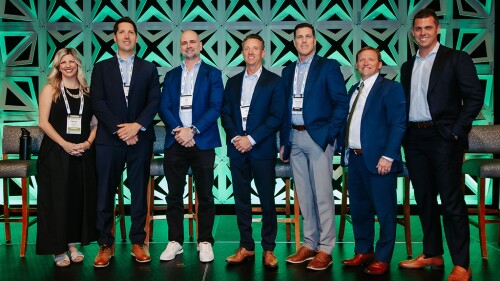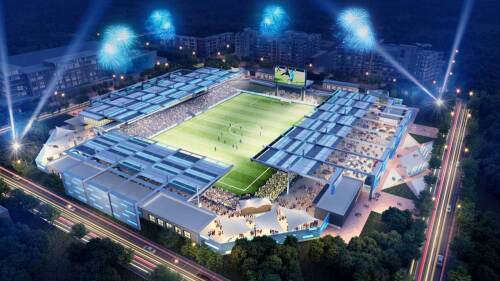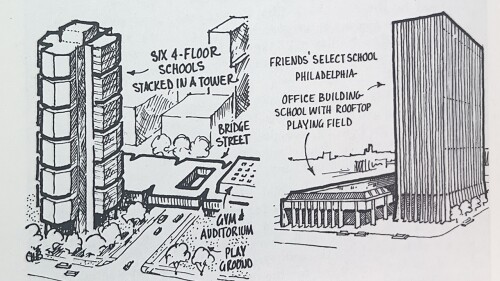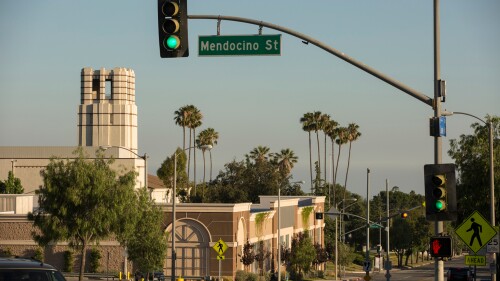Development and Construction
Phase 2 of the Willets Point redevelopment project is transforming an industrial part of Queens that once-inspired F. Scott Fitzgerald’s “valley of ashes” in The Great Gatsby in 1925. A century later, Queens Development Group—a joint venture between Related Companies, Sterling Equities, and New York City Football Club—is converting 23 acres (9.3 ha) of underutilized land into a $3 billion mixed-use community.
The recent ULI Carolinas Conference in Charleston offered a glimpse into groundbreaking projects transforming the urban landscapes of North and South Carolina, with developers delivering rapid-fire presentations during the high-energy Crane Watch session. Each presenter shared the vision, challenges, and impacts their projects promise for communities across the Carolinas.
The June 1982 issue of Urban Land. Detroit Mayor Coleman Young, Hamtramck Mayor Robert Kozaren, and General Motors Chairman Roger Smith pose before the remains of Chrysler’s former Dodge Main plant at a formal project groundbreaking in May 1981.
When Ballantyne first emerged out of North Carolina farmland, more than 30 years ago, the original developers of this master-planned project already had a concrete vision in mind for its future: evolution. The development team intrinsically understood that, as Ballantyne—an affluent community nestled in south Charlotte—would expand beyond its farmland roots, the project would need to adapt to meet the needs of a more diverse and changing demographic.
A major investment in the long-term future of professional soccer is set to dramatically transform the last major land parcel in downtown Oklahoma City. Thanks to a successful public/private partnership, America’s 20th-largest city is seeing a continued resurgence in its downtown.
Optimism is often misunderstood as wishful thinking or blind positivity. In reality, fearless positivity is a leadership strategy—one that allows organizations to not only endure change but leverage it as a catalyst for innovation. Research shows that organizations led by optimistic leaders outperform their peers. Optimistic leaders foster more engaged teams, make bolder strategic decisions, and create cultures that embrace adaptability rather than resist it.
According to CBRE’s “North America Data Center Trends H2 2024" report, the overall vacancy rate in primary markets fell to a record-low 1.9 percent at year-end. Only a handful of facilities with 10 MW or more are slated for delivery in 2025 and are not yet leased, reflecting the scarcity of large-scale available inventory.
In the July-August 1967 edition of Urban Land, Thurston H. Ross delivered a speech on high-rise schools, the abandonment of the front and backyard concept, and a return to the town meeting type of government in the future.
Nestled in the shadow of SSM Health’s new $550 million hospital and Saint Louis University’s medical and undergraduate campuses, the former Steelcote Manufacturing Company Paint Factory and its neighboring parcels constituted a forgotten remnant of St. Louis’ proud industrial past. Few observers, if any, envisioned the area’s potential for housing not only students and hospital employees but also national entertainment options such as Topgolf and a major retailer, Target.
When my wife and I moved back to the Los Angeles area in 2000, we bought a three-bedroom Spanish-style home two blocks south of the Altadena/Pasadena border, and just a few blocks from the neighborhoods lost in the Eaton fire this past January. It was a special home for us: our first child was born there, and we loved starting our family in such a racially and socio-economically diverse residential community.










